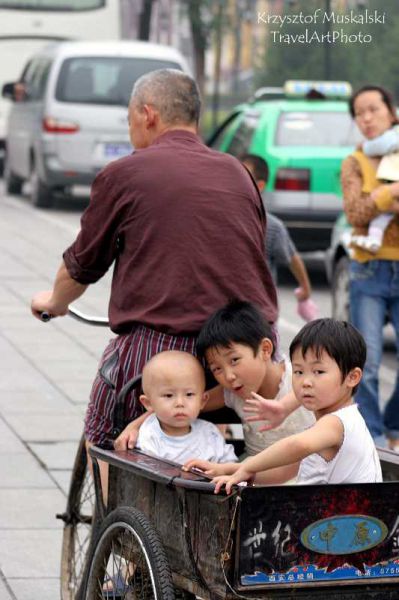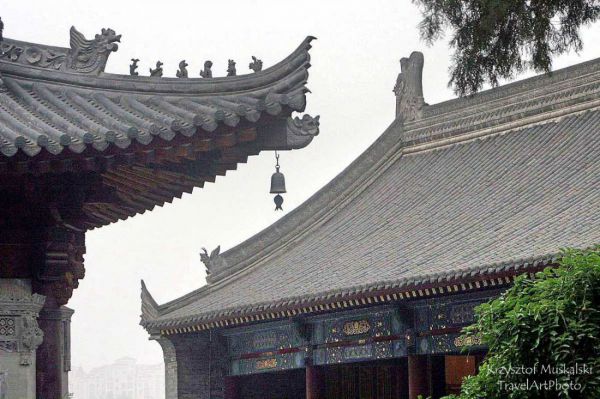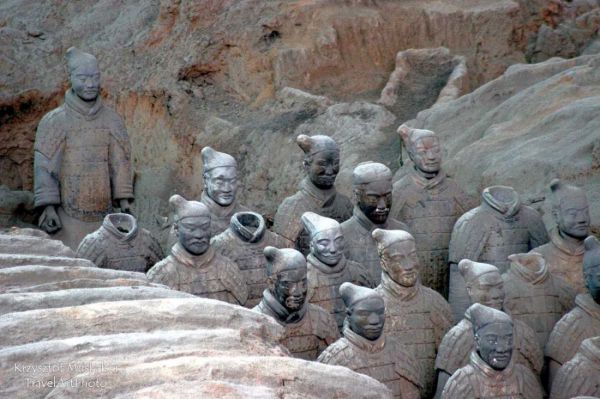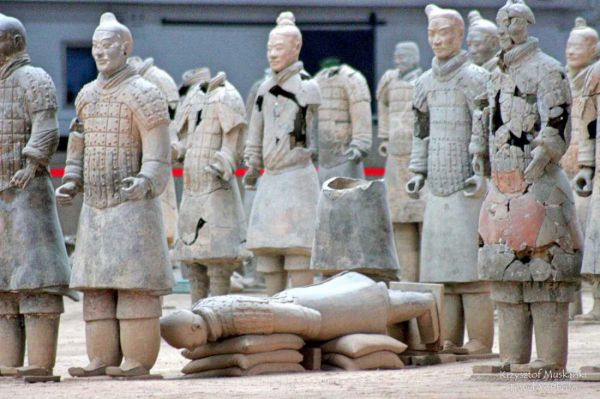May - June 2011
Chinese Odyssey
Thousands of years of wandering through the darkness of history, thousands of years to discover and build progress, thousands of years to strengthen civilization. China - the oldest continuous civilization in the world - has opened its doors more widely in these modern times. Civilization that living in tight isolation, while struggling with the turmoil of history, never stopped its efforts to progress and build a state that is all that was under Heaven - the Middle Kingdom. Travelling through modern China, it is impossible not to feel the breath of this oldest civilization's legacy, consistently amazing with its momentum, its duration, and amazing diversity of 56 nationalities. And often difficult to understand from a Eurocentric point of view.
A series of photographic exhibitions under the joint title "Chinese Odyssey" presents selected images of contemporary China.
Xi'an (West Palace) - the cradle of Chinese civilization, the imperial capital of thirteen dynasties for 1100 years. This period flourished with many treasures. The unification of China has undoubtedly become the largest of them. This was done by Shi Huangdi - the first emperor of the Qin dynasty. China has become a world power. And it has remained one up to this day. The First Emperor of China gave strong foundations to the Chinese state. He created an effective administrative system, introduced uniform money, a system of measures and weights, initiated the construction of uniform roads and irrigation canals, and the use of uniform building materials. He also initiated the construction of the Great Wall of China. However, the building that actually brought fame to the emperor Shi Huangdi was certainly his tomb with the famous Terracotta Army.
This 2200-year-old army has become one of the most famous armies in the world. And it became one only in 1974, when local villagers dug a head of one of the warriors while digging a well. Nowadays, we can admire the figures of over 8,000 supernatural-sized warriors and their horses. Each of the figures is individually made, no two are identical.
Subsequent dynasties strengthened the position of the capital of Xi'an, also called Chang-an (Eternal Peace). These undoubted treasures - peace, stability and development - were achieved especially during the Tang Dynasty, the golden age of China. It was the time when Xi'an became the largest city in the world. You can feel the atmosphere of this period while watching the famous colorful historical show while sitting at the tables set with equally famous steamed dumplings. The Silk Road, particularly active during the Tang dynasty, had its eastern end in Xi'an.
Xi'an also boasts with many architectural treasures. Among them are the impressive city walls (12 m high, 15-18 m wide) from the Ming dynasty surrounding the central part of the city for 14 km. Within them there's the monumental Bell Tower - Zhong Lou, the symbol of the city. Nearby there are the Big Wild Goose Pagoda - Dayan Ta and Little Wild Goose Pagoda - Xiaoyan Ta.
A treasure of Xi'an that comes as a bit of surprise is the smile. It appears not only on the faces of the Chinese encountered here, but also on the faces of the figures - Buddha, bard from 2000 years ago, or soldiers of the Terracotta Army ...
It seems though, that these are not all Xi'an's treasures yet. The barrow with the tomb of the crazy emperor Shi Huangdi is still waiting for explorers, and apparently hides the empire of the First Emperor in an unusual miniature.
Krzysztof Muskalski
The "Chinese Odyssey" series:
1. Lijiang - The Jewel of Yunnan
2. Treasures of Xi’an

















